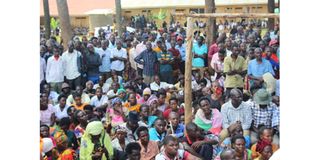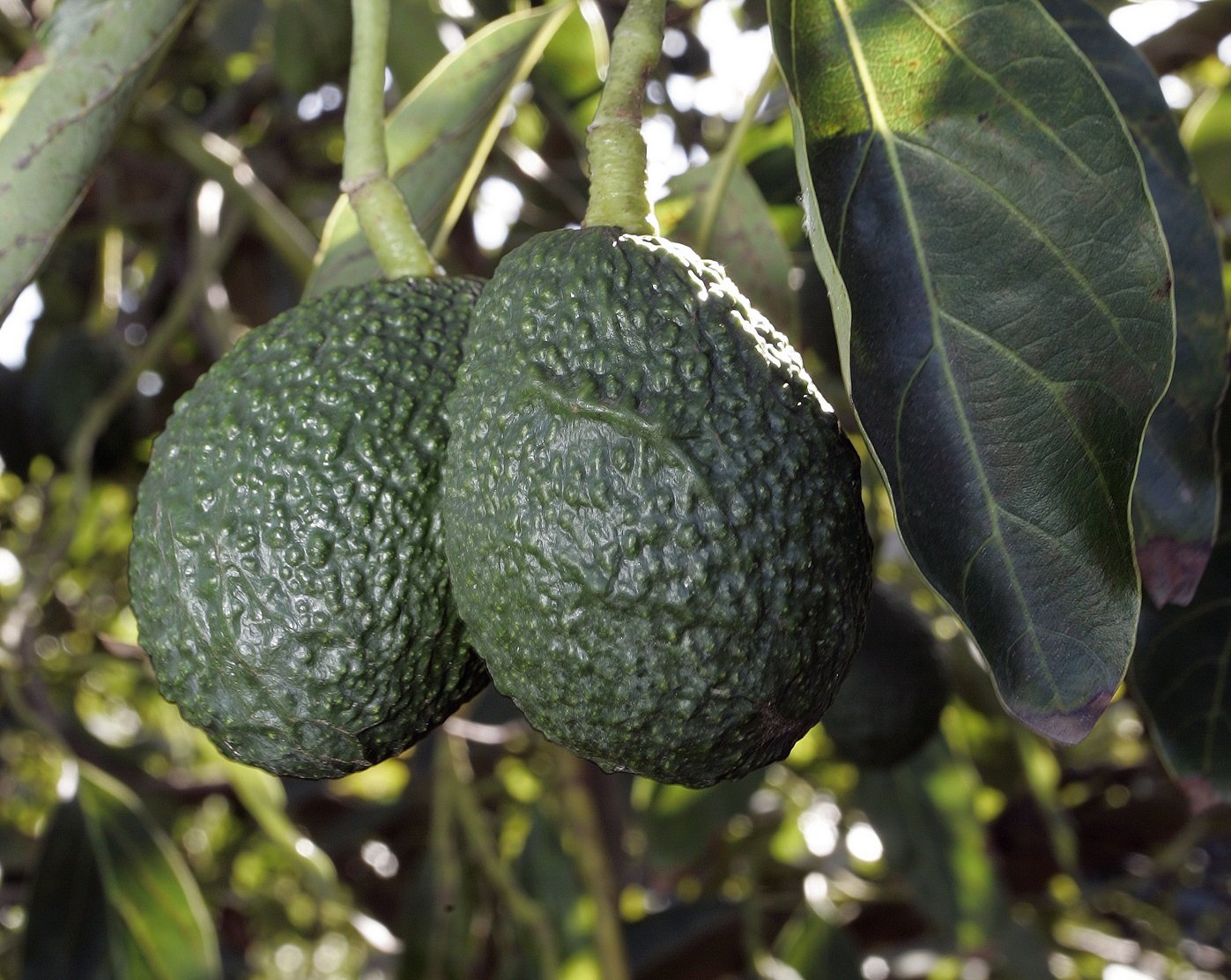Prime
Kyegegwa avocado project to leave 100,000 homeless

Some of the affected residents from Kazinga, Mpara town councils, and Rwentuha Sub-county, attend a meeting called by area MP, Mr Jackson Kafuuzi, at Ruhangire Primary School early recently. PHOTO | ALEX ASHABA
What you need to know:
- The land is being earmarked for an avocado plantation and an industrial park.
Approximately 130,000 residents of Rwentuha Sub-county and Kazinga Town Council in the Kyegegwa District are on the brink of eviction.
The affected residents are accused of encroaching on government land on which they have established their homes for nearly three decades.
This mass displacement is a consequence of President Museveni’s directive to Mr Hilary Onek, the Minister of Relief and Disaster Preparedness, instructing him to secure approximately 10 square miles from the two refugee settlement camps, namely Kyaaka 1 and Kyaaka II, in Kyegegwa.
Mr Museveni wants the land to be given to an investor to establish an avocado plantation on five square miles while the other five square miles would have an industrial park.
“I am writing to put on record my long-standing directive to get 10 square miles from the two refugee camps of Kyaaka I and Kyaaka II for two purposes,” reads in part President Museveni’s January 30 letter.
The President in his letter, also copied to the Vice President, Prime Minister, and legislators from Kyegegwa, expressed concern that he received information that part of the land in Kyaaka was invaded by land grabbers. The President said he would visit the area in April.
“Why should Ugandan citizens and, I hear even non-Ugandans, steal government land? They should be the ones to protect government land even during times of turmoil when the government controlling authorities are not functioning well,” the letter reads.
He said the government projects established on the said land would be of greater benefit to the people in the area than the small farms of invaders. The President further revealed that the industrial Parks would give the government money inform of taxes, mainly indirectly through consumer taxes and (PAYE), to support both the citizens and the refugees.
“An industrial Park in that area would create many jobs and so would a big plantation of avocados. [In other areas], Namanve Industrial Park will create 200,000 jobs when it is fully developed and the Kalangala Palm oil project has created 1300 jobs. I intend to come and meet those people who invaded a well-known government land in April,” the letter further reads.
“Uganda is 93,000 square miles. Why should anybody invade the small pieces of land belonging to the government? A nation without a vision perishes, as said in the Book of Proverbs chapter 29 verse 18,’’ the President added.
Currently, Kyaaka I is located in Kyaaka South Constituency and is headed by Mr Jackson Kafuzi who also doubles as the Deputy Attorney General while Kyaaka II, which has about 36 square miles covers parts of Kyaaka Central Constituency with some of its parts accommodating refugees in areas of Bukere, Bujuburi, Sweswe, and the area legislator is Mr Tom Bright. If the President’s directive is effected, hundreds of people who had allegedly encroached on the government land will be evicted to pave the way for the investor.
However, in April last year, a section of residents of four sub-counties in Kyegegwa petitioned the former Leader of Opposition in Parliament, Mr Mathias Mpuuga, questioning the process through which their land was allocated to refugees.
Led by their chairman, Mr Daniel Nimpamya, the residents of Mpara, Kazinga, Rwentuha, and Mugamba sub-counties handed their petition on April 24, 2023 and they demanded an inquiry by Parliament into the invlovement of officials from the Office of the Prime Minister in what they described as improper and unlawful possession of their land.
Ms Zahara Twinomugisha, a resident of Rwetuha Sub-county, said in 1994 during the Rwanda genocide , Ugandans who were living in Rwanda returned home and the government settled them on the land. He added that that time, the land was not gazzated for refugees.
Ms Twinomugisha further revealed that the returnees were later relocated to Kyaaka II refugee settlement land and local people continued to use the land and their stay on the land was not contested by the government then.
“The Ugandans who were returnees from Tanzania and were living in Sango Bay were brought by the government and they settled on our land with us, and later in 2016, we saw a letter [indicating] that this land belonged to refugees and now they are asking us to leave. Where should we go?” he asked.
In a March 1 letter, a copy of which this publication has seen, the area Member of Parliament, Mr Jackson Kafuuzi who also doubles as Deputy Attorney General, wrote to President Museveni indicating that the piece of land in question, became vacant in 1990 when the Rwandese returned to Rwanda, and the leadership of the then greater Kabarole District encouraged people to settle there.
He said several land titles were issued by the Kabarole District Land Board and are currently held by people in Tooro Sub-region.
“Your Excellency, by the time Kyegegwa District was established in the year 2009, this land was fully occupied and the population census of 2014 put the figure at 46,000 people. This land currently covers the sub-county of Rwentuha, Kazinga Town Council, and part of Mpara Town Council,” the letter reads.
He said the government has since developed the land by establishing modern seed schools, one town council of Kazinga, a sub-county of Rwentuha, one health centre III, and two health centre II, water, electricity, primary schools, and other developmental infrastructure.
He added that Rwentuha sub-county has 52 villages while Kazinga Town Council has 27 villages. Both Kazinga and Rwentuha also have 96 churches, 24 private primary schools, five private secondary schools, eight milk cooling plants (diaries), 10 coffee hurlers and 48 maize hurlers.
Mr Kafuuzi said in 2016, the former Prime Minister, Dr Ruhakana Rugunga, held a series of meetings with the leaders of Kyegegwa District to resettle 6,000 people (Ugandans) who had been expelled from Tanzania on this same land.
“Dr Ruhakana Rugunda committed government and said since there was one active refugee settlement in Kyegegwa (Kyaaka II Refugee Settlement) and that since the land for Kyaaka I had already been occupied by Ugandans in addition to “returnees” from Tanzania and others expelled from forest reserves, this land would be gazetted,” he said.
According to Mr Kafuzi, the Prime Minister proposed that the people who were already on the land (46,000) as per the census of 2014 should share the land with the returnees.




